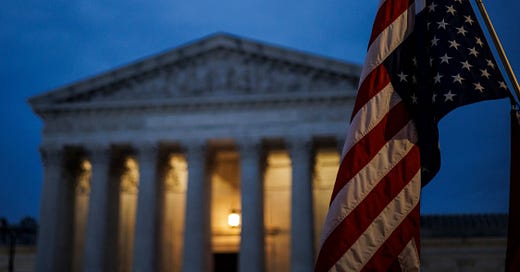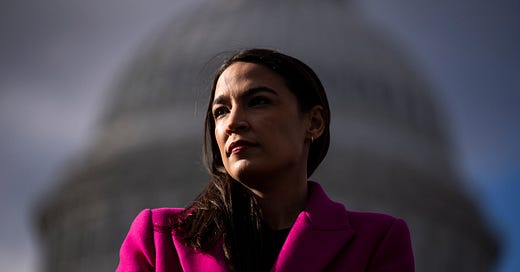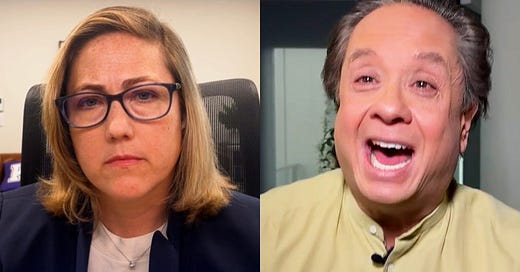
So Much for Conservative Judicial Restraint
Making sense of a Supreme Court role reversal on the issue of standing.
WHAT DOES THE SUPREME COURT DO? There are two main schools of thought. One view has it that the Court settles concrete disputes between adverse parties. Although the Court interprets the law, it does so only as a means of resolving the controversy at hand. Under the other view, the Court still hears cases—it doesn’t pronounce on hypothetical questions—but its true function is to uphold the rule of law in a broader sense. The Court defends, guides, and extends the nation’s norms and values, and it holds the other branches of government to account.
Let’s follow Hart and Wechsler’s The Federal Courts and the Federal System, the leading textbook in this area, in calling these the “dispute resolution” model and the “law declaration” model. If you’d studied that treatise recently, you could’ve convinced yourself that there’s a clear political divide over these models. The Warren Court opened the courthouse doors to more litigants. The Rehnquist Court shut them again. Justice William O. Douglas (the outspoken progressive known as “Wild Bill”) argued that the trees have standing to sue. Justice Antonin Scalia (who needs no introduction) railed against letting citizens sue simply for suffering “mental displeasure” at the misuse of their tax dollars. The law declaration model is “liberal,” you might’ve assumed, the dispute resolution model “conservative.”
Not anymore.
Last month, the Supreme Court invalidated the Biden administration’s student loan forgiveness plan. A statute empowers the secretary of education to “waive or modify” provisions of the federal student loan program during a national emergency. Late last year, Secretary Miguel Cardona invoked the COVID-19 pandemic as grounds to cancel around $430 billion in federal student loans. In Biden v. Nebraska, the Court’s six-justice conservative majority held, in an opinion by Chief Justice Roberts, that the secretary had effectively tried not to “waive or modify” some loan requirements, but to “exhaustive[ly] rewrit[e]” the Education Act.
That may well be correct. But whom did the scheme injure? As the majority acknowledged, a plaintiff needs standing to sue; it needs “a ‘personal stake’ in the case.” It must point to a “concrete and imminent harm,” particular to itself, involving “a legally protected interest, like property or money.” Who could meet these criteria in a suit over the Biden administration’s loan writeoff?
According to the majority, the state of Missouri could. Well, not exactly. But Missouri could enlist the Missouri Higher Education Loan Authority (MOHELA) as its proxy. MOHELA services federal student loans. It loses revenue if loans are canceled. And some of MOHELA’s revenue is used to fund education initiatives and scholarship programs that benefit Missouri’s students. Because MOHELA serves this “public function,” the majority ruled, an injury to it counts as an injury to Missouri.
The problem with this reasoning is that MOHELA is a distinct legal entity. As a public corporation, it could have filed a lawsuit for itself. It didn’t. As a public corporation, its assets and debts are its own. A loss of revenue on its part does not pass through to Missouri. Not surprisingly, Missouri had never before tried to sue on MOHELA’s behalf.
“Under our usual standing rules,” Justice Kagan objected, in a seething dissent for the Court’s three liberals, this “separation would matter.” She chastised the majority for downplaying the fact that MOHELA’s “economic losses (1) are not passed on to the State and (2) can be rectified (if there is legal wrong) without the State’s help.” Nor did it matter that some of MOHELA’s revenue flows back to Missouri students. That, Kagan explained, is a harm not to Missouri’s government, but to Missouri’s citizens. A state government lacks standing to sue, as its citizens’ guardian—as “parens patriae”—a federal government equally charged with protecting those citizens’ rights.
But what really galled Kagan was how the majority, in deciding to hear the case, had “exceed[ed] the permissible boundaries of the judicial role.” The rules of standing are supposed to “keep courts acting like courts,” she wrote. They are supposed to ensure that the justices “send political issues to political institutions”—the executive and legislative branches—and “retain only legal controversies, brought by plaintiffs who have suffered real legal injury.” In Biden v. Nebraska, the Court failed to do this. The majority went on, in Kagan’s view, to botch the case on the merits as well. “In every respect,” she concluded, “the Court today exceeds its proper, limited role in our Nation’s governance.”
TWENTY YEARS AGO, the Environmental Protection Agency denied a petition urging it to set greenhouse-gas emission standards for new motor vehicles. The state of Massachusetts challenged the EPA’s decision. The federal government argued that the state lacked standing—that it could not point to a particularized injury caused by the EPA and redressable by a court order. The Supreme Court declared that a state government is “entitled to special solicitude in our standing analysis,” and allowed the suit to proceed.
Dissenting in Massachusetts v. EPA (2007), Chief Justice Roberts opposed “relaxing” the Court’s standing requirements simply “because asserted injuries are pressed by a State.” Nothing about a state’s status as parens patriae, he insisted, “dilutes the bedrock requirement of showing injury, causation, and redressability.” What’s more, he continued, a state lacks “standing to assert a quasi-sovereign interest—as opposed to a direct injury—against the Federal Government.”
“The constitutional role of the courts,” Roberts wrote, “is to decide concrete cases—not to serve as a convenient forum for policy debates.” The “Court’s standing jurisprudence . . . recognizes that redress of [political] grievances . . . is the function of Congress and the Chief Executive.” The principles of standing ensure “that courts function as courts,” and they must be “taken seriously as a matter of judicial self-restraint.” In Massachusetts v. EPA, Roberts complained, the Court failed to do this. It “transgress[ed] the proper—and properly limited—role of the courts in a democratic society.”
Obviously, the parallels between Roberts’s past dissent and Kagan’s present one are remarkable. The ethos of judicial restraint does not belong to one faction, one party, or one side. As Kagan observes, “Justices throughout history have raised the alarm when the Court has overreached.”
Yet there is a lamentable pattern here. Generation after generation, justices express views about the “dispute resolution” and “law declaration” models that seem to track their feelings about which cases they, personally, would prefer to hear. The rules of standing were formalized by Justice Louis Brandeis, a progressive who wanted to protect New Deal legislation from legal challenge. They were later disparaged by Justice Harry Blackmun, a progressive who wanted to allow the Sierra Club to litigate environmental issues. They were loosened when a liberal majority that included Kagan decided, over a dissent that included Roberts, to strike down the Defense of Marriage Act. They were loosened again when a conservative majority led by Roberts decided, over a dissent led by Kagan, to strike down the Biden administration’s student-loan forgiveness program.
In Massachusetts v. EPA, Roberts urged the Court not to make standing into a manipulable “lawyer’s game.” In Biden v. Nebraska, Kagan threw those words back at him. The real lawyer’s game, it seems, is to wave the flag of judicial restraint only as convenience dictates. And that’s a discouraging thought.

















